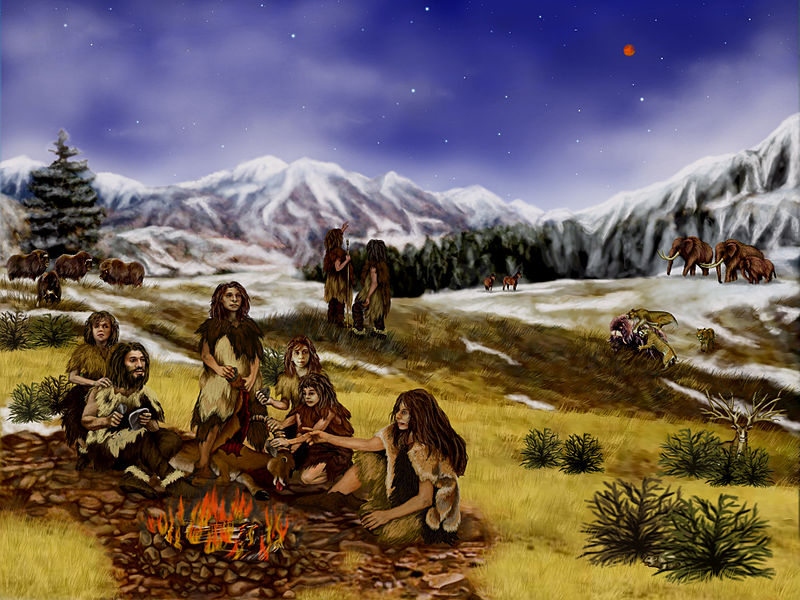

Far from the traditional view of Neanderthals as heavy-grunting prehumans, a new theory suggests that our extinct relatives may have been chattier than we assumed.
Humans and Neanderthals share a common ancestor, likely Homo heidelbergensis, a species we diverged from as many as 400,000 years ago. We survived, while Neanderthals died out, though at a certain point, interbreeding likely contributed to the similarities we’ve found between our genomes. We probably interacted and swapped certain cultural aspects with our Neanderthal cousins, perhaps language included.
Dan Dediu and Stephen Levinson, researchers at the Max Planck Institute for Psycholinguistics, argue in a recent review study that rather than language being the result of a single genetic mutation, it evolved more gradually, starting sometime between the emergence of Homo erectus and Homo heidelbergensis about a million years ago.
They write:
[T]he genetic story so far suggests that Neandertals and Denisovans [another relative] had the basic genetic underpinnings for recognizably modern language and speech, but it is possible that modern humans may out-strip them in some parameters (perhaps range of speech sounds or rapidity of speech, complexity of syntax, size of vocabularies or the like).
They examine previous scientific literature for the physical and cultural capacities that would have been necessary to produce early speech. Analysis of fossils from Neanderthals and earlier ancestors suggests that both humans and Neanderthals could have had modern hearing capabilities in the range of frequencies that we have now, as well as the ability to moderate breathing for speech, for example. The authors argue that these capabilities indicate that Homo heidelbergensis, the evolutionary link between us, would have been articulate. Current estimates of linguistic development assume that language evolved after we diverged from Homo heidelbergensis, but if our ancestors were already talking, this would shift our understanding of when language first appeared from 50,000 years ago to as early as a million years ago.
The researchers speculate that because it seems Neanderthals lived in small, isolated groups, they would have had language features typical of small traditional societies we see today: “sizable phoneme inventories, complex morphosyntax, high degrees of irregularity, and vocabularies in the tens of thousands.”
“We can also be fairly sure, due to the relatively isolated nature of the groups, that there were many distinct languages,” they write. Interaction bewteen humans and Neanderthals could have led to some linguistic exchange, and it’s possible some parts of our language structures came from theirs. The authors suggest comparing structures of African and non-African language, since non-African humans have been found to be more genetically similar to Neanderthals and thus more interaction probably occurred between Neanderthals and humans in regions outside of Africa. Subtle structural differences could indicate that some linguistic influences from Neanderthals remain in non-African languages.
The study was published in Frontiers in Language Sciences.